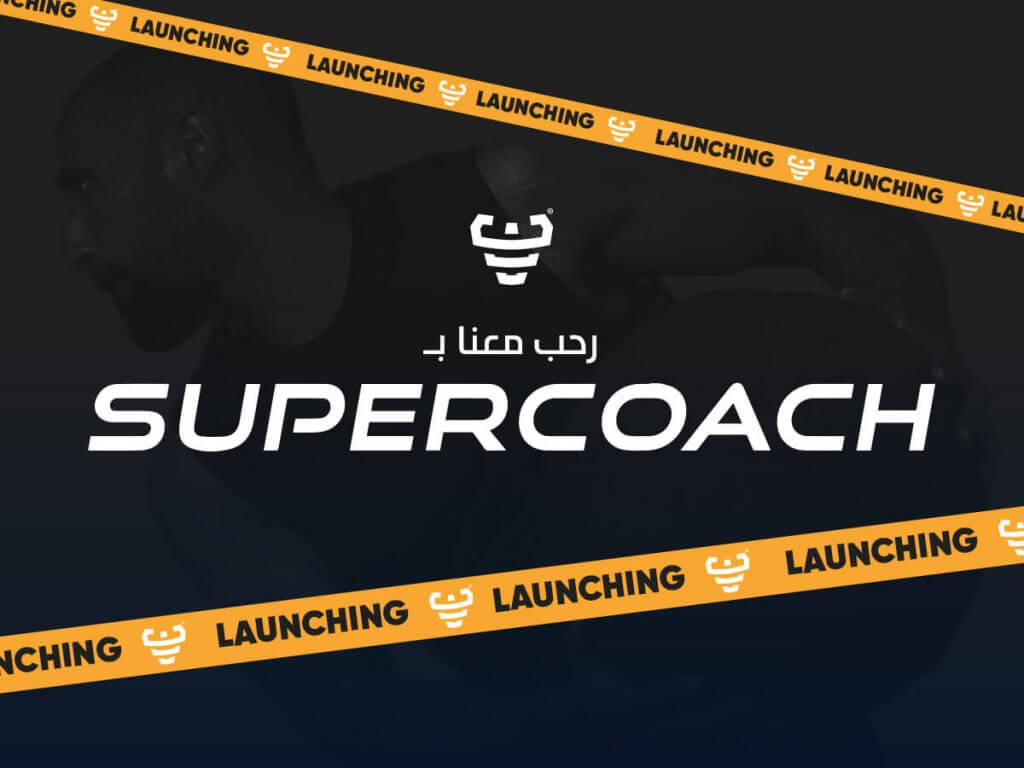Step-by-step guide: How to start your online coaching business
Trainer Guide
Online coaching is revolutionizing the way experts connect with clients in today’s digital age. With the global coaching industry valued at over $4 billion, more professionals are taking their services online for the freedom and flexibility it offers.
As an online coach, you operate in a virtual environment. This means you don’t rely on in-person meetings or traditional local marketing. Instead, all your client interactions, program delivery, and promotion happen through digital platforms empowering you to reach a global audience from anywhere.
Ready to turn your expertise into a thriving online coaching business? Let’s dive into this “how to start your own online coaching business” guide to get you started!

What is online coaching?
Online coaching is a rapidly growing, service-based business model where coaches deliver personalized guidance, support, and expertise to clients through virtual platforms. By leveraging digital tools like video conferencing, messaging apps, and online resources, coaches connect with clients worldwide to provide tailored advice, actionable strategies, and comprehensive training.
Whether you’re a fitness trainer, business mentor, or life coach, online coaching allows you to reach a broader audience, adapt your services, and achieve measurable results effectively.
What are the benefits of online coaching?
1. Boost Your Income with Online Coaching: This extra availability allows you to schedule more sessions, directly increasing your earning potential. Instead of being limited by time and distance, you can maximize your hours and grow your revenue.
2. Scale Your Coaching Business with Ease: With group coaching programs or virtual classes, you can serve a larger audience without overloading yourself. Online coaching platforms like SuperCoach also help automate daily tasks like scheduling and sharing materials, freeing up your energy to work on delivering quality coaching sessions.
3. Expand Your Reach Beyond Local Clients: Online coaching lets you connect with clients from all over the globe. You can reach markets with high demand for coaching, offering your expertise to a wider audience and growing your client base internationally.
4. Generate Passive Income Through Digital Products: Turn your coaching expertise into evergreen products, such as recorded courses or downloadable guides.
5. Lower Costs to Attract New Clients: Marketing your coaching business online is often more affordable and efficient than traditional methods. Social media platforms, email campaigns, and other digital tools let you reach potential clients without relying on expensive ads or slow word-of-mouth referrals.
6. Ride the Wave of a Growing Industry: The demand for online coaching continues to climb as more people look for flexible and accessible learning opportunities. By 2032, this market is projected to reach $11.7 billion, highlighting its incredible potential for growth.
What makes a successful coaching business?
Transforming your coaching practice into a thriving business starts with a clear strategy and a focus on what truly matters, delivering transformation.
Here’s how to ensure your coaching business flourishes in today’s competitive landscape:
- Find Your Niche: Specialize in solving specific problems to stand out and attract your ideal clients.
- Build Expertise: Leverage your skills, experiences, and certifications to boost credibility and confidence.
- Define Your Value Proposition: Clearly communicate the transformation you offer and how you’ll achieve it with clients.
- Master Coaching Skills: Refine key skills like active listening, insightful questioning, and trust-building to maximize impact.
- Create a Client Acquisition Strategy: Diversify your marketing through social media, ads, networking, and content sharing.
- Leverage Testimonials: Use client reviews to showcase success and build trust with potential clients.
- Scale Smartly: Expand with group programs, online courses, or workshops to increase reach and revenue.

How To Start Your Online Coaching Business?
1. Identifying Your Niche
After years in the fitness industry, one thing has become crystal clear: a well-defined niche is the foundation of a successful coaching business. When you focus on a specific group of people and their unique challenges, you don’t just stand out—you become indispensable.
So, why does it Matter?
Clients Want Specialists, Not Generalists
Many new coaches fall into the trap of trying to appeal to everyone, thinking it will bring in more clients. But the truth? Clients don’t want a jack-of-all-trades.
Position Yourself as the Expert
They’re looking for someone who understands their struggles, speaks their language, and can deliver results tailored to their needs. That’s why identifying your niche is a game-changer—it allows you to build authority, attract the right clients, and create programs that genuinely solve problems.
How to Find Your Niche?
1. Start with You: What excites you most about coaching? Think about your strengths and passions:
- Are you exceptional at helping new moms regain their fitness post-pregnancy?
- Do you guide busy professionals through efficient workout routines?
- Maybe you support athletes in improving their performance.
2. Focus on Your Ideal Audience: Take the time to understand your ideal clients:
- What problems do they face?
- Are they struggling with weight loss, time management, or motivation?
- Look for recurring themes in the clients you’ve worked with before or in the fitness communities you follow.
3. Validate Your Niche: Once you’ve identified a potential niche:
- Reach out to people who fit your target profile and ask them about their challenges.
- Offer free consultations or small programs to test the waters.
- Listen closely to their feedback—it will shape your offerings and ensure you’re on the right track.
2. Defining Your Ideal Client
If there’s one thing I’ve learned in my years as a coach, it’s that not everyone is your client—and that’s a good thing. Success as an online coach doesn’t come from trying to help everyone; it comes from knowing exactly who you’re here to serve. This starts with a crystal-clear picture of your ideal client.
When you define your ideal client, you gain the ability to craft programs, messaging, and offers that speak directly to their needs. Instead of hoping someone resonates with your services, you’ll attract the right people effortlessly.
How to Create Your Ideal Client Avatar?
1. Ask the Right Questions
- Who are they? Think age, gender, location, profession, and lifestyle.
- What are their goals? Whether it’s losing weight, gaining muscle, or improving performance, you need to know their desired outcomes.
- What are their challenges? Pinpoint what’s holding them back—lack of time, motivation, or guidance.
2. Get Specific
Don’t stop at surface-level traits. Dig deeper:
- What motivates them?
- What’s a typical day in their life?
- What are their fears and frustrations?
The more detailed your avatar, the more relatable and effective your messaging will be.

3. Developing Essential Coaching Skills
In my years as a coach, one thing has always stood out: your skills are the foundation of your success. Whether you’re working with a beginner looking for confidence in the gym or a seasoned athlete chasing their next goal, your ability to guide, motivate, and connect is what sets you apart.
Coaching isn’t just about sharing workouts or advice, it’s about truly understanding people and helping them achieve transformation.
The most effective coaches master a few critical skills:
- Active Listening: Truly hear your clients. Understand not just what they say, but what they mean. Clients need to feel heard and understood; it’s the cornerstone of trust.
- Empathy: Every client’s journey is unique. Empathy helps you meet them where they are and support them without judgment.
- Communication: Clear, inspiring communication ensures your clients understand their goals and the steps to get there. It’s not just about what you say, but how you say it.
- Problem-Solving: Clients come to you with barriers time, motivation, injury. Your job is to help them navigate these challenges with tailored solutions.
These skills are more than just tools—they’re how you show your clients that you’re invested in their success.
4. Crafting Your Coaching Program
One of the biggest lessons I’ve learned from working in the fitness industry is that a well-structured coaching program isn’t just about workouts or meal plans—it’s about creating a clear, actionable path that leads to results.
Your program needs to reflect the goals and challenges of your clients while keeping them motivated and focused.
Are your clients looking to lose weight, gain strength, or improve endurance? Every client comes with unique goals, so your program must be adaptable yet structured enough to provide a sense of direction.
Each program should be broken into clear phases, each with a specific purpose. For example:
- Phase 1: Building Foundations – Establish good habits and introduce baseline routines.
- Phase 2: Progression – Gradually increase intensity or complexity to challenge your clients without overwhelming them.
- Phase 3: Results and Maintenance – Focus on measurable outcomes and strategies to sustain progress.
Outcome-based planning is key. Define success with measurable milestones, such as losing 10 pounds in three months or running a 5K under 30 minutes. When clients see tangible results, their trust in your program, and their commitment grow exponentially.
Regular check-ins, progress tracking, and adjustments ensure the program evolves with your client’s needs.
Lastly, always tailor your approach to the client. Generic, cookie-cutter programs won’t deliver the same results as something designed specifically for the person in front of you.
5. Setting Your Pricing Structure
When it comes to setting your pricing structure as an online coach, the goal isn’t just to make a living—it’s to reflect the value you bring while making your services accessible to the right clients.
First, remember that your pricing isn’t just a number; it’s a reflection of your expertise, the results you deliver, and the experience your clients receive.
1. Start with Research
Take time to understand the market. Look at what other coaches in your niche charge, especially those with similar experience and services.
2. Offer Flexible Options
Clients have different budgets, and providing flexibility can make your services more accessible:
- Basic Packages: These might include access to a workout plan and email support.
- Premium Packages: Add one-on-one coaching sessions, personalized programs, and more comprehensive support.
- Group Coaching or Memberships: For clients who prefer affordability and community-driven programs.
3. Incentivize Commitments
Offer discounts for longer-term packages (e.g., 3- or 6-month commitments) to ensure a steady income and better results for clients.
4. Trial Offers and Beta Discounts
If you’re just starting out, consider offering limited-time discounts or trial packages to attract your first clients. This builds social proof and gives you testimonials to use in your marketing.

6. Legal and Financial Considerations
Embarking on the journey of launching your online coaching business is thrilling, but laying a secure foundation with the right legal and financial setup is essential.
Skipping these steps might feel tempting, but trust me, it can lead to costly headaches later!
Start with Business Registration: Your first move is to make your business official. Choose a structure that aligns with your goals—whether it’s a sole proprietorship, LLC, or another option specific to your location.
Stay Organized with Financial Systems: Tracking your income and expenses might not be glamorous, but it’s a game-changer for success. Use tools like QuickBooks, Xero, or spreadsheets to manage your finances effectively. This clarity will be invaluable when tax season arrives and as you plan for long-term growth.
Streamline Payments: A seamless payment process is key to a great client experience. Platforms like Stripe, PayPal, or Square make it easy to accept payments and manage invoices, ensuring your transactions are smooth and hassle-free.
Plan Ahead for Taxes: Avoid surprises during tax season by setting aside a portion of your income—20-30% is a good rule of thumb depending on local laws. Preparing early gives you peace of mind and keeps you financially secure.
Protect Yourself with Client Agreements: A simple, clear contract outlining your services, payment terms, and mutual expectations is a must. It protects both you and your clients, fosters trust, and prevents misunderstandings.
7. Establishing Your Online Presence
In today’s digital world, having a strong online presence isn’t optional,it’s essential!
As a coach, your clients need to see you, trust you, and feel confident that you’re the expert they’ve been searching for.
Over the years, In SuperCoach, we’ve seen the difference between coaches who show up online with a clear, professional brand and those who disappear into the noise.
So, If you want to stand out, you need to build an online presence that speaks to your audience and reflects your value.
Start with your website. Think of it as your digital headquarters, a place where clients can learn who you are, what you offer, and how you can help them.
A strong website doesn’t need to be complicated, but it does need to be clear and professional. Focus on these essentials:
- Home Page: Make it clear who you help and how. A strong headline like, “Helping busy professionals achieve real results with efficient, proven coaching programs” instantly sets the tone.
- About Page: Share your story, your expertise, and why you’re passionate about coaching. Clients want to know the person behind the brand.
- Services Page: Detail your coaching programs, packages, and how clients can work with you. Be specific about the value you offer.
- Testimonials: Social proof builds trust. Include reviews and success stories to show clients what’s possible.
- Contact Page: Make it easy for potential clients to connect with you. Include a contact form or direct email link.
At SuperCoach, we offer tools, resources, and expert advice to help you bring this vision to life. From building a compelling website to crafting a consistent brand message, we’re here to support you every step of the way.
Once your website is ready, it’s time to leverage social media to drive visibility and connect with your audience. it’s a tool to build trust, showcase your expertise, and attract clients. Choose platforms that align with your audience (Instagram, LinkedIn, Facebook) and focus on consistency.
Share content that adds value to your audience’s lives:
- Tips and advice related to your coaching niche
- Client success stories and progress updates
- Behind-the-scenes glimpses of your training and coaching process
- Your personal journey as a coach—people connect with authenticity
Engage with your audience daily. Reply to comments, answer questions, and start conversations.
Finally, remember that your brand is built on consistency. Whether it’s the tone of your social posts, the design of your website, or the way you interact with clients, keep everything aligned.

8. Choosing the Right Technology
We’ve discovered over many years in the fitness industry that the tools you use can either simplify or complicate your job. The correct technology enables you to provide high-quality coaching while saving time and energy—both of which are critical aspects in building a sustainable online coaching business.
But here’s the thing: not every tool is designed for coaches. Many are overloaded with superfluous features and take hours to learn. What works best are solutions that simplify your process, allowing you to focus on your clients and their outcomes.
What to Look for in Coaching Technology?
The tools you choose should solve specific problems and enhance your coaching delivery. Start simple, prioritize user-friendly options, and think about scalability as your business grows. Here are my go-to categories:
- Program Delivery Platforms: Tools like Trainerize or TrueCoach let you design, deliver, and track customized training plans in one place. They’re great for managing multiple clients while maintaining a personal touch.
- Payment Systems: Use platforms like Stripe or PayPal to automate billing, making payments straightforward for you and your clients.
- Scheduling and Communication: Apps like Calendly and Slack ensure seamless scheduling and ongoing client engagement, no matter where you are.
For an all-in-one solution tailored specifically for personal trainers and fitness coaches, check out SuperCoach. It’s designed to help you streamline your workflow, attract more clients, and grow your online business with tools and resources built from real coaching experience.
How These Tools Help?
The right tech isn’t about adding complexity; it’s about creating an effortless client experience. When clients can easily access workouts, track progress, and communicate with you, their confidence in your coaching grows, and so does your reputation.
For example:
- Use a platform that allows progress tracking with visual metrics. Clients love seeing their growth in real terms, whether it’s weight lifted or inches lost.
- Automate reminders for sessions and check-ins to stay on top of accountability.
- Offer simple payment options, so billing doesn’t feel like a chore for either side.

9. Marketing Your Coaching Business
Building a successful coaching business goes beyond expertise, it’s about crafting a marketing strategy that fosters trust, highlights your skills, and authentically connects with your audience. Here’s how to position yourself for growth:
1. Share Content That Establishes Your Authority
Provide solutions to your audience’s pain points through engaging content. Share practical advice, fitness tips, or behind-the-scenes glimpses of your coaching process on platforms like blogs, Instagram, or YouTube.
2. Showcase Testimonials and Success Stories
Let client results speak for you. Feature testimonials, before-and-after transformations, and reviews to boost your credibility and trustworthiness.
3. Build Collaborative Partnerships
Partner with industry professionals, such as nutritionists or gyms, to enhance your offerings and expand your audience reach while building a holistic support network.
4. Create a Memorable Brand
Your brand is your identity. Develop a professional website and maintain consistent messaging and visuals to stand out in a crowded coaching market.
By weaving trust and value into your marketing, you’ll build lasting connections with clients and grow your business organically.
10. Launching Your Coaching Business
Starting your online coaching business is an exciting step, but it’s also where thoughtful planning can make all the difference.
Over time, we’ve learned that a successful launch isn’t about doing everything at once, it’s about starting strategically, testing your approach, and laying the groundwork for sustainable growth.
Start with a Beta Launch
Rather than diving into a full launch, begin with a beta phase. A beta launch allows you to introduce your coaching services to a small, select group of clients.
Reach out to friends, social media followers, or your gym community and offer them an exclusive opportunity to work with you during this early stage. Consider offering incentives like discounted rates or added perks in exchange for honest feedback and testimonials.
Why it works:
- You can fine-tune your services before scaling.
- Clients feel valued as part of an exclusive experience.
- Managing a small group makes the learning process manageable.
Build Credibility with Early Social Proof
Use your beta launch to collect testimonials, success stories, and reviews that highlight real results. This social proof will boost your credibility and attract future clients. Ask for testimonials that detail specific outcomes, such as:
- “I gained confidence and consistency in my workouts within just 4 weeks.”
- “Their personalized coaching kept me on track even with my hectic schedule.”
Display these testimonials prominently on your website, social media, and marketing materials to show potential clients the impact of your coaching.
Refine Your Process Before Scaling
Take time after your beta phase to evaluate:
- What worked well?
- Where did you face challenges?
- What feedback did clients provide?
By the time you’re ready for a full-scale launch, your business will be polished and professional.

11. Scaling Your Business
Growing your online coaching business is not just about taking on more clients, it’s about optimizing your time, expanding your offerings, and building a sustainable foundation for long-term success.
1. Diversify Your Revenue Streams
Relying solely on one-on-one coaching can limit your growth. Expand your impact and income by offering:
- Group Coaching Programs: Serve multiple clients simultaneously with structured, scalable solutions.
- Online Courses or E-Books: Share your expertise in a format clients can access anytime.
- Membership Platforms: Provide exclusive workout plans, resources, or live Q&A sessions through subscriptions.
- Brand Collaborations: Partner with wellness brands to diversify income and boost visibility.
2. Automate for Efficiency
Streamlining repetitive tasks gives you more time to focus on coaching. Platforms like SuperCoach can assist in managing key processes:
- Client Management: Automate scheduling and progress tracking.
- Payments and Invoicing: Ensure smooth transactions with integrated billing systems.
- Marketing: Schedule social media posts and email campaigns with ease.
Automation doesn’t replace personal connections, it enhances your ability to deliver value while keeping operations seamless. SuperCoach specializes in equipping coaches with the tools they need to grow without feeling overwhelmed.
3. Strengthen Your Brand and Reputation
As your business scales, your brand identity becomes crucial. Platforms like SuperCoach can provide insights and resources to refine your website, social media, and messaging, ensuring everything reflects your expertise and values.
4. Grow with Intention
Scaling is not about taking every opportunity, it’s about focusing on the right ones. With SuperCoach as your partner, you can diversify wisely, automate where it counts, and maintain the high standards your clients expect.

By implementing these strategies and leveraging the expertise of platforms like SuperCoach, you can expand your coaching business sustainably, impacting more lives while enjoying the freedom to focus on what you love. Scaling becomes less about working harder and more about thriving in a way that aligns with your goals.

